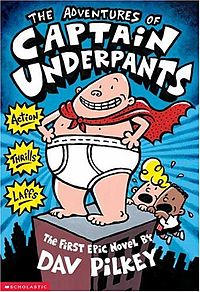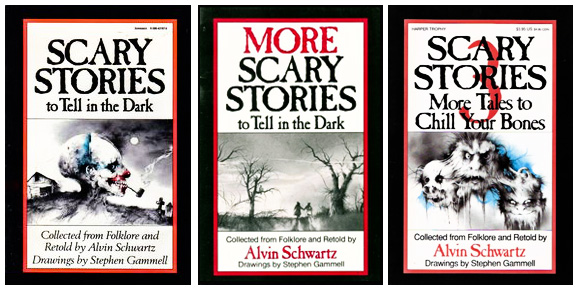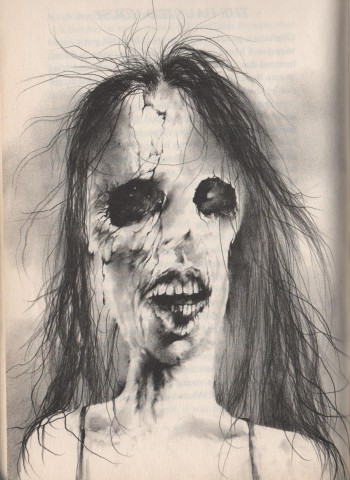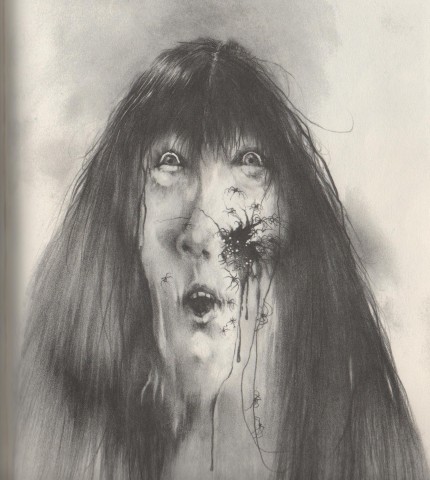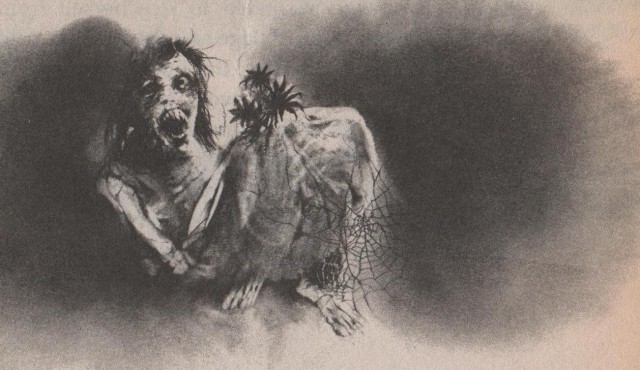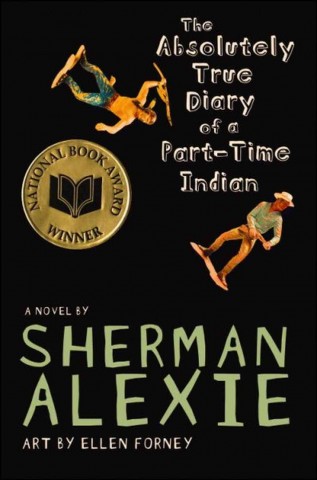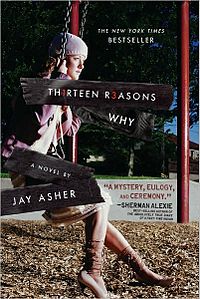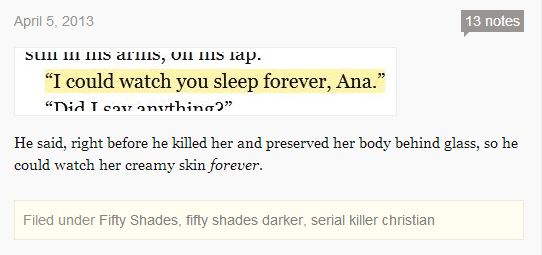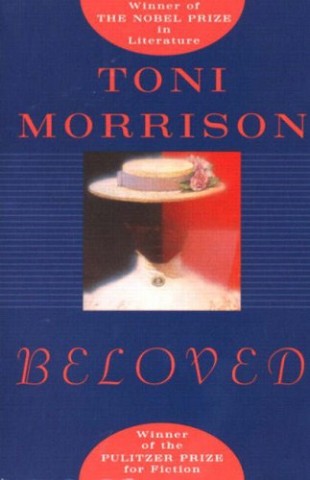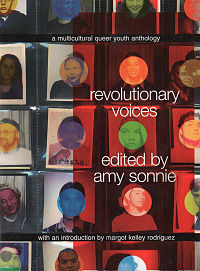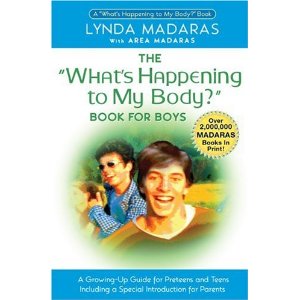You know I am already getting pumped for Banned Books Week September 21st-27th. It’s the only thing that reigns in my Halloween enthusiasm till a more appropriate time. I think I’ve shared the 2013 Most Frequently Challenged Book List with you before, but here it is again:
Captain Underpants (series), by Dav Pilkey
Reasons: Offensive language, unsuited for age group, violence
The Bluest Eye, by Toni Morrison
Reasons: Offensive language, sexually explicit, unsuited to age group, violence
The Absolutely True Diary of a Part-Time Indian, by Sherman Alexie
Reasons: Drugs/alcohol/smoking, offensive language, racism, sexually explicit, unsuited to age group
Fifty Shades of Grey, by E.L. James
Reasons: Nudity, offensive language, religious viewpoint, sexually explicit, unsuited to age group
The Hunger Games, by Suzanne Collins
Reasons: Religious viewpoint, unsuited to age group
A Bad Boy Can Be Good for A Girl, by Tanya Lee Stone
Reasons: Drugs/alcohol/smoking, nudity, offensive language, sexually explicit
Looking for Alaska, by John Green
Reasons: Drugs/alcohol/smoking, sexually explicit, unsuited to age group
The Perks of Being a Wallflower, by Stephen Chbosky
Reasons: drugs/alcohol/smoking, homosexuality, sexually explicit, unsuited to age group
Bless Me Ultima, by Rudolfo Anaya
Reasons: Occult/Satanism, offensive language, religious viewpoint, sexually explicit
Bone (series), by Jeff Smith
Reasons: Political viewpoint, racism, violence
Each year the ALA also puts out a more informative list with examples and more details about the cases as part of the press kit. This year’s list concerns challenges from May 2013 to March 2014, and I went through and listed them all out in spreadsheet form to see how many I had already read (you know I love a good spreadsheet). This year, I’d already read 10 of the 28 titles listed, and here they are:
The Absolutely True Diary of a Part Time Indian by Sherman Alexie
I listened to the audiobook (read by the author) which I still think is the best way to enjoy this book. My writeup of it is here.
Anne Frank: The Diary of a Young Girl by Anne Frank
We read selections from this book in 7th grade, but, like most of the girls in my class, I ended up checking the real book out from the library (particularly after hearing about how there were BOOBS in it–the very section usually brought up in its challenges)
Bless Me, Ultima by Rodolfo Anaya
I read this in a young adult lit class during a section on banned books. I guess because if you practice a religion other than straight-up, mainline Christianity, someone’s going to have a problem with it.
Eleanor & Park by Rainbow Rowell
I read this last year as part of my 200 books! It even made the Pretty List! Rainbow Rowell’s depiction of an abusive stepfather and poverty are scarily real. So by all means let’s restrict access for kids it might actually help.
The Handmaid’s Tale by Margaret Atwood
I read this in Scotland when I had copious free time, little money, and access to only an academic library.
The House of the Spirits by Isabel Allende
I HAD A TEST ON THIS BOOK ON THE 3RD DAY OF SCHOOL, 11TH GRADE. Because St. Pete IB was hardcore about their summer reading list, once upon a time. House of the Spirits is my go to book for “naughtiest thing I read for school” due to all the sex and rape and reanimated mummy porn and whatnot. I usually follow this with “… and if I’m not scarred for life, I think whoever is reading The Awakening right now will be fine.” I was SO THRILLED to learn that other schools are getting their magical realist game on. This was the first magical realist text I ever read. Never looked back
Intensely Alice by Phyllis Reynolds Naylor
I read the whole Alice series two years ago because they end up on these lists so often. I can’t say I found any of them very shocking, but a bunch of them did end up on my Ugly List that year.
The Librarian of Basra by Jeanette Winter
This is a picture book about an Iraqi librarian trying to save the books in the library from fire/bombing during the Iraq War. The illustrations are beautiful! And, of course, it’s a true story.
The Perks of Being a Wallflower by Stephen Chbosky
I read this for this project like four years ago before it was a movie or anything! Remember how we had a heart to heart about it? And Brian’s comments were flagged by my homophobic spam filter? Truly a simpler time.
Persepolis by Marjane Satrapi
I think I read this for a graphic novel project? This was actually my favorite case I read about in the press kit this year. Here is the quote of the story:
Removed, via a district directive, from all Chicago, Ill. public schools (2013) due to “graphic illustrations and language” and concerns about “developmental preparedness” and “student readiness.” Seventh- and eleventh-grade students study the graphic novel about the author’s experience growing up in Iran during the Iranian revolution as part of Chicago Public Schools’ Literacy Content Framework. As the news spread of the directive, students mobilized a media campaign in opposition to “banning a book that’s all about the freedom of speech.” Students took to their Facebook and Twitter accounts, checked out all library copies of the book, wrote blogs, sent e-mails, wrote investigative articles for the student newspaper, contacted the author, staged protests, and appeared on local radio and television programs. Eventually the school issued a letter telling high school principals to disregard the earlier order to pull the book.
I love this one the most because when you research cases of books being challenged, you hear a lot from angry parents, some from defensive librarians and teachers, and, most of the time, absolutely nothing from actual students. I love that these students recognized this hypocrisy, and cared enough to do something about it! But I also love hearing their opinion about the book challenge in general, since the literature’s effect on them is the whole point of all of this.
Anyway, of the challenges I read about this year, I decided to concentrate first on those challenged around here, in North Carolina. Which is timely because there was just an article in the paper about The Bluest Eye being pulled right here in my county! Stay tuned.
